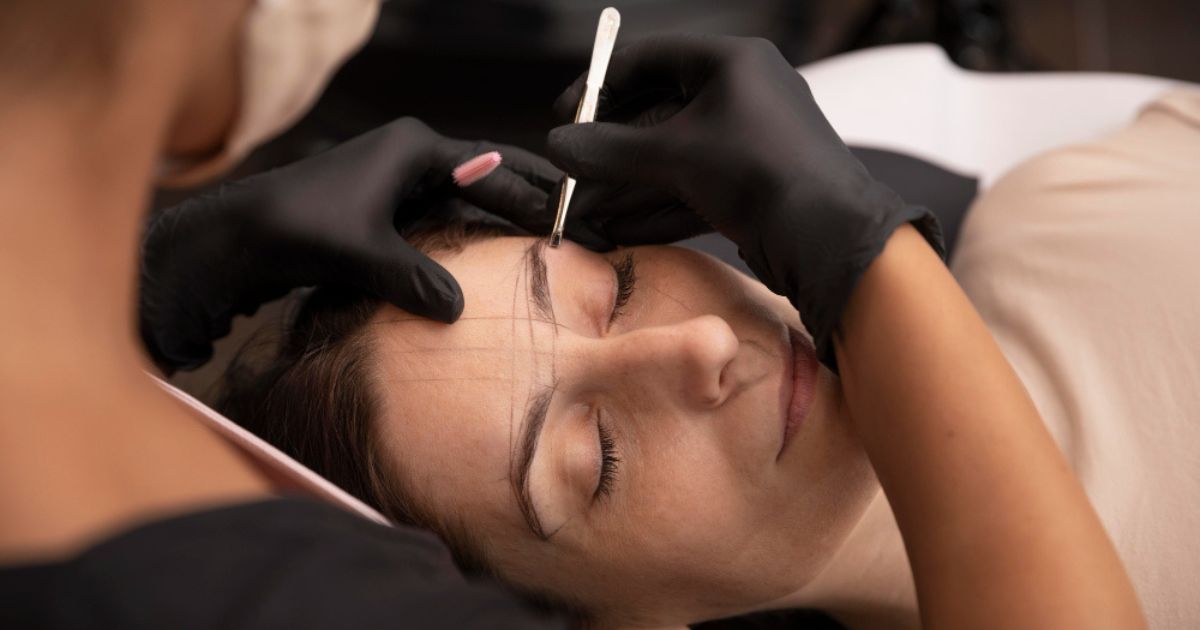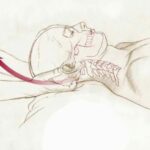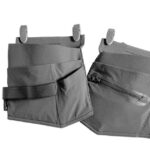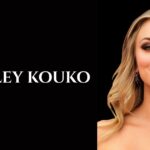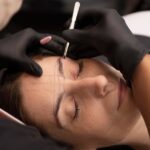In today’s fast-paced beauty industry, precision, hygiene, and artistry are more important than ever. Among the many hair removal techniques available, eyebrow threading has emerged as a favorite for its accuracy, gentleness, and long-lasting results. Unlike waxing or tweezing, threading removes hair directly from the follicle using a simple cotton thread—making it ideal for sensitive skin and intricate shaping.
As demand for skilled threading professionals grows, so does the need for proper training. This is where an eyebrow threading school comes in.
An eyebrow threading school offers structured, hands-on education that equips students with the technical skills, safety protocols, and client service knowledge needed to excel in this niche. Whether you’re a complete beginner or a licensed esthetician looking to expand your service menu, enrolling in a reputable threading program can open doors to a flexible, creative, and financially rewarding career.
In this comprehensive guide, we’ll explore what eyebrow threading is, why formal training matters, what to expect from an eyebrow threading school, how to choose the right program, and the career opportunities that await graduates.
Table of Contents
What Is Eyebrow Threading?
Before diving into the educational aspect, it’s essential to understand what eyebrow threading actually entails. Threading is an ancient hair removal technique that originated in parts of South Asia and the Middle East over 6,000 years ago. It involves twisting and rolling a thin cotton thread along the skin to trap and lift unwanted hair from the root.
The process is remarkably precise—technicians can remove a single hair or shape an entire brow with millimeter-level accuracy. Because it doesn’t involve chemicals, heat, or sticky resins (like wax), threading is often preferred by people with sensitive skin, acne-prone complexions, or those using retinoids and other topical medications that make waxing unsafe.
Threading is also faster than tweezing and typically lasts 2–6 weeks, depending on individual hair growth cycles. When performed correctly, it results in clean, defined brows that enhance facial symmetry and expression.
Despite its simplicity in concept, mastering threading requires practice, dexterity, and an artistic eye. This is why professional instruction through an eyebrow threading school is invaluable.
Why Formal Training Matters
Many assume that because threading uses only a piece of thread, it’s easy to learn from online videos or informal apprenticeships. While self-teaching is possible to some extent, it comes with significant limitations:
- Inconsistent technique: Without expert feedback, students may develop inefficient or painful methods.
- Poor hygiene practices: Improper sanitation can lead to infections or cross-contamination.
- Lack of anatomy knowledge: Understanding facial structure and hair growth patterns is crucial for safe, flattering results.
- No certification: Most salons, spas, and licensing boards require formal credentials.
An eyebrow threading school addresses all these concerns by providing a curriculum grounded in both theory and practice. Students learn not just how to thread, but why certain techniques work better for different face shapes, skin types, and client preferences. They also receive instruction in client consultation, aftercare advice, business ethics, and state regulations.
Moreover, formal training builds confidence. Knowing you’ve been taught by industry professionals—and practiced on real models under supervision—prepares you to handle real-world scenarios with poise and professionalism.
What to Expect in an Eyebrow Threading School Curriculum
A high-quality eyebrow threading school offers a well-rounded curriculum designed to transform beginners into competent, certified threading specialists. While program lengths and structures vary, most include the following core components:
1. Fundamentals of Threading Technique
Students begin by learning the basic mechanics of threading: how to hold the thread, create loops, and control tension. Instructors demonstrate various grips (such as the “hand-to-mouth” or “two-handed” method) and help students find the style that suits their hand strength and coordination.
Early lessons focus on straight lines and simple shapes before progressing to full brow shaping. Repetition is key—students often practice on mannequins, latex skins, or fellow classmates before working on live models.
2. Facial Anatomy and Brow Design
Understanding the underlying structure of the face is essential for creating balanced, flattering brows. Courses typically cover:
- The golden ratio and facial symmetry
- Common brow arch types (e.g., soft arch, high arch, straight)
- How to map brows using reference points (like the inner corner of the eye, pupil, and outer corner)
- Customizing shapes based on face shape (oval, round, square, heart, etc.)
This artistic component ensures that graduates don’t just remove hair—they sculpt brows that enhance each client’s natural beauty.
3. Hygiene, Sanitation, and Safety Protocols
Because threading involves close contact with the skin, cleanliness is non-negotiable. Students learn:
- How to sanitize tools and workstations
- Proper hand-washing and glove-use procedures
- Disposal of used threads and other single-use items
- Recognizing contraindications (e.g., active cold sores, sunburn, open wounds)
Many schools also cover OSHA and state board regulations related to cosmetology and esthetics.
4. Client Communication and Consultation
Great threading isn’t just about skill—it’s also about service. Students practice:
- Conducting intake consultations
- Setting realistic expectations
- Explaining aftercare (e.g., avoiding makeup, sun exposure, and sweating for 24 hours)
- Handling sensitive feedback or complaints professionally
These soft skills are critical for building client loyalty and generating referrals.
5. Business and Career Development
For those planning to work independently or open their own brow bar, many eyebrow threading schools include modules on:
- Pricing strategies
- Booking and scheduling systems
- Marketing on social media
- Building a portfolio
- Legal requirements for operating a beauty business
Some programs even offer job placement assistance or networking opportunities with local salons.
6. Advanced Techniques and Specializations
After mastering the basics, students may explore:
- Full-face threading (upper lip, chin, sideburns)
- Corrective brow shaping for over-plucked or uneven brows
- Bridal or editorial brow styling
- Combining threading with tinting or waxing (if licensed)
These advanced skills allow graduates to offer premium services and command higher rates.
Curious to learn more? Dive into the rest of our blog for helpful tips and insights!
How Long Does Training Take?
Program duration varies depending on the school and intensity of instruction. Options include:
- Weekend workshops (1–2 days): Ideal for licensed estheticians adding threading to their services. Focuses on core techniques.
- Part-time courses (2–6 weeks): Meets evenings or weekends; suitable for those balancing work or family.
- Full-time programs (1–4 weeks): Immersive training with daily practice and assessments.
- Online + in-person hybrids: Theory taught online, hands-on labs conducted in-studio.
Most reputable eyebrow threading schools require a minimum of 16–40 hours of training to ensure competency. Some states may have specific hour requirements for certification, so it’s important to verify local regulations.
Certification and Licensing Requirements
One common question prospective students ask is: “Do I need a license to do eyebrow threading?”
The answer depends on your location. In the United States, regulations vary by state:
- States that require a cosmetology or esthetician license: California, Texas, Florida, New York, and others mandate that anyone performing threading must hold a state-issued license in cosmetology or esthetics. In these cases, an eyebrow threading school may serve as supplemental training, but you’ll still need to complete a full cosmetology program and pass state board exams.
- States with threading-specific exemptions: Arizona, Nevada, and Virginia, for example, allow individuals to perform threading without a full cosmetology license—provided they complete a state-approved threading course (often 400+ hours) and pass an exam.
- States with minimal regulation: A few states have no specific laws governing threading, though local health departments may still require basic sanitation training.
Always research your state’s rules before enrolling. A credible eyebrow threading school will be transparent about whether their program meets local licensing requirements and will often assist with exam preparation or application paperwork.
Choosing the Right Eyebrow Threading School
With so many options available, selecting the best eyebrow threading school requires careful consideration. Here are key factors to evaluate:
1. Accreditation and Reputation
Look for schools accredited by recognized bodies (such as NACCAS in the U.S.) or those with strong reviews from past students. Ask for before-and-after photos of student work and check Google, Yelp, or social media for testimonials.
2. Instructor Qualifications
Instructors should be licensed professionals with years of threading experience—not just certified trainers. Ideally, they’ve worked in high-volume salons or trained others in the field.
3. Hands-On Practice Time
Avoid programs that are mostly lecture-based. You need ample time to practice on real models under supervision. Ask: “How many live models will I work on before graduation?”
4. Curriculum Depth
Ensure the course covers not just technique, but also sanitation, client care, and business basics. A comprehensive program prepares you for the full scope of the job.
5. Cost and Value
Tuition can range from $200 for a weekend workshop to $2,000+ for an intensive certification program. Compare what’s included: kits, manuals, certification fees, job placement support. Beware of hidden costs.
6. Location and Schedule
Choose a school that fits your lifestyle. If you’re working full-time, a weekend or evening program may be best. Some schools also offer mobile training or pop-up classes in different cities.
7. Post-Graduation Support
Does the school offer ongoing mentorship? Refresher courses? Help building a website or social media presence? Long-term support can be invaluable as you launch your career.
Career Opportunities After Graduation
Completing an eyebrow threading school opens up a variety of career paths in the beauty and wellness industry:
1. Salon or Spa Threading Specialist
Many graduates start by working in established salons, spas, or dedicated brow bars (like Brow Design, Benefit, or European Wax Center). These environments provide steady clientele, product access, and team support.
2. Mobile or Home-Based Threading Artist
With minimal equipment (just thread, antiseptic, and a chair), threading is highly portable. Many professionals offer house calls or operate from home studios—ideal for those seeking flexibility and lower overhead.
3. Freelance Brow Artist
Freelancers work independently, often building a loyal following through Instagram, TikTok, or word-of-mouth. They may offer pop-up services at markets, bridal events, or corporate wellness days.
4. Threading Instructor
Experienced threaders can return to an eyebrow threading school as educators, training the next generation of artists. This path combines technical expertise with leadership and communication skills.
5. Entrepreneur and Brow Bar Owner
Ambitious graduates may open their own threading studio or brow lounge. With rising demand for clean, precise grooming, this niche business model can be highly profitable—especially in urban or suburban areas.
Income Potential
Earnings vary by location, experience, and business model. On average:
- Salon employees earn $15–$25/hour plus tips.
- Freelancers charge $20–$50 per brow session.
- Studio owners can generate $50,000–$150,000+ annually, depending on clientele and overhead.
Because threading sessions are quick (10–20 minutes), professionals can see multiple clients per hour—maximizing income without burnout.
The Future of Eyebrow Threading
As beauty trends continue to favor natural, low-maintenance looks, eyebrow threading is poised for sustained growth. Unlike microblading or permanent makeup, threading is non-invasive, reversible, and affordable—making it accessible to a wide demographic.
Moreover, increasing awareness of skin sensitivity and chemical-free beauty has boosted threading’s popularity among eco-conscious and health-focused consumers. Social media influencers and celebrities often showcase their perfectly arched brows, further driving demand for skilled threaders.
For aspiring beauty professionals, this means strong job security and room for innovation. Whether you specialize in classic shaping, dramatic editorial brows, or holistic skincare-integrated services, an eyebrow threading school provides the foundation to thrive in this evolving field.
Common Myths About Eyebrow Threading
Let’s address a few misconceptions that may deter people from pursuing training:
Myth 1: “Threading is painful.”
While there is mild discomfort (similar to tweezing), a skilled technician minimizes pain through proper technique and speed. Most clients find it far less painful than waxing.
Myth 2: “Anyone can learn it in an hour.”
Basic threading might be simple, but mastering symmetry, speed, and customization takes weeks or months of practice—hence the value of an eyebrow threading school.
Myth 3: “It’s outdated.”
On the contrary, threading is experiencing a global renaissance. Major beauty chains now offer it alongside traditional services.
Myth 4: “You don’t need formal training.”
While not legally required everywhere, professional training ensures safety, quality, and credibility—key factors in building a successful career.
Final Thoughts: Is an Eyebrow Threading School Right for You?
If you’re passionate about beauty, enjoy working with people, and value precision and artistry, enrolling in an eyebrow threading school could be a life-changing decision. It’s a relatively low-barrier entry point into the beauty industry—requiring minimal startup costs, flexible hours, and high client satisfaction.
More importantly, threading is a skill that never goes out of style. Brows frame the face, and well-groomed eyebrows boost confidence instantly. By mastering this ancient yet modern technique, you position yourself as a trusted expert in a growing niche.
Before you sign up, visit a few schools, talk to instructors, and observe a class if possible. Ask about graduate success rates and job placement. Remember: the quality of your education directly impacts your future clients’ experience—and your reputation.
In a world where first impressions matter more than ever, your ability to shape a perfect brow isn’t just a service—it’s a gift. And with the right training from a reputable eyebrow threading school, you’ll be ready to share that gift with confidence, care, and creativity.
So whether you dream of working in a luxury spa, building your own brand on Instagram, or simply earning extra income doing something you love, the journey begins with one simple step: finding the right eyebrow threading school to guide you. And with the demand for skilled threaders at an all-time high, there’s never been a better time to start.
From technique and safety to business savvy and artistic vision, a comprehensive eyebrow threading school doesn’t just teach you how to remove hair—it empowers you to shape careers, confidence, and communities, one brow at a time.

